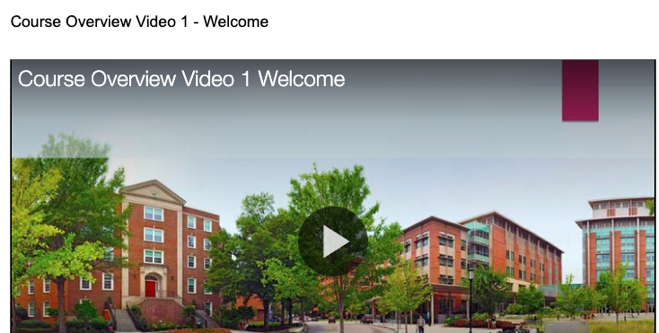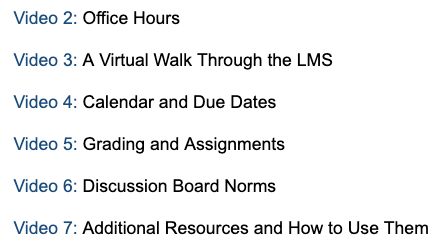Tags: Conceptual Knowledge, Content, Lecture, LMS, Multimedia, Peer-Reviewed Entry, Video

Description
Learning management systems provide different ways to deliver content. Linking presentations, uploading documents, and embedding articles make course materials easily accessible to all students. Embedding or linking videos in an LMS can also be effective content delivery methods, however, whether or not the videos are engaging or even watched is often an issue. According to a study conducted by MIT, the optimal video length should be under 6 minutes (Guo, 2013). Furthermore, according to a study conducted at the Georgia Institute of Technology, physics professors discovered the fraction of students accessing the entirety of a lecture video decreases when videos become longer in length (Lin et al., 2017). By the nature of the material or depth and breadth of the delivery, lecture and content videos can be lengthy. Videos over 12 minutes in length often have limited views (Guo, 2013). If content or lecture videos are over 12 minutes, students may be missing out on key material or coming to class unprepared because they do not watch the videos posted in their courses.
Ultimately, it is the responsibility of the student to watch course content videos, however faculty can make the videos more engaging and acquire views with some extra planning and preparation. The researchers who conducted the MIT study recommended to “invest in pre-production effort” (Guo, 2013). Similarly, researchers from A.T. Still University School of Osteopathic Medicine found that well-organized, concise content videos are essential to students’ value to their learning (Pettit, Kinney, & McCoy, 2017). To prepare for the videos, instructors should think about exactly what needs to be delivered in the video and make an outline. Instructors can also use index cards with specific topics on individual cards. Each component of the outline or each index card should be its own video, thus making a series of short instructional videos. For tracking purposes, each video should be aptly named to make it easy for students to locate. Once completed, videos can be uploaded in a file folder, embedded, or listed as links for easy access.
Link to example artifact(s)
In this example, the collective group of videos gives an entire course overview. The first video, an overall welcome, is embedded (Figure 1) while the other videos are listed below (Figure 2). Each video is specifically named, which makes navigation simple and direct. For this video series, index cards were used to help determine the order of topics that needed to be covered (Figure 3). If the course overview video had been recorded as one single video, it would have been over 20 minutes long. As separate videos, each one is approximately 3 minutes in length.



Link to scholarly reference(s)
Guo, P. J. (2013). How video production affects student engagement: An empirical study of MOOC videos. Proceedings of the first ACM conference on Learning @ scale (pp. 41-50). https://doi.org/10.1145/2556325.2566239
Lin, S-Y, Aiken, J. M. A., Seaton, D. T., Douglas, S. S., Greco,E. F., Thoms,B. D., & Schatz, M. F. (2017). Exploring physics students’ engagement with online instructional videos in an introductory mechanics course. Physical Review Physics Education Research, 13(2), 020138.
Pettit, R. K., & Kinney, M., & McCoy, L. (2017). A descriptive, cross-sectional study of medical student preferences for vodcast design, format and pedagogical approach. BMC Med Educ, 17(1), 89. https://doi.org/10.1186/s12909-017-0926-z
Citation
Morris, L. (2020). Deliver content using short, focused, instructional videos. In A. deNoyelles, A. Albrecht, S. Bauer, & S. Wyatt (Eds.), Teaching Online Pedagogical Repository. Orlando, FL: University of Central Florida Center for Distributed Learning. https://topr.online.ucf.edu/deliver-content-using-short-focused-instructional-videos/.Post Revisions:
- August 5, 2020 @ 13:55:43 [Current Revision]
- August 5, 2020 @ 13:55:18
- June 11, 2020 @ 01:27:42
- March 10, 2020 @ 14:39:48
- March 4, 2020 @ 20:04:05
- March 4, 2020 @ 20:02:42
- March 4, 2020 @ 20:02:08
- February 10, 2020 @ 20:45:21

